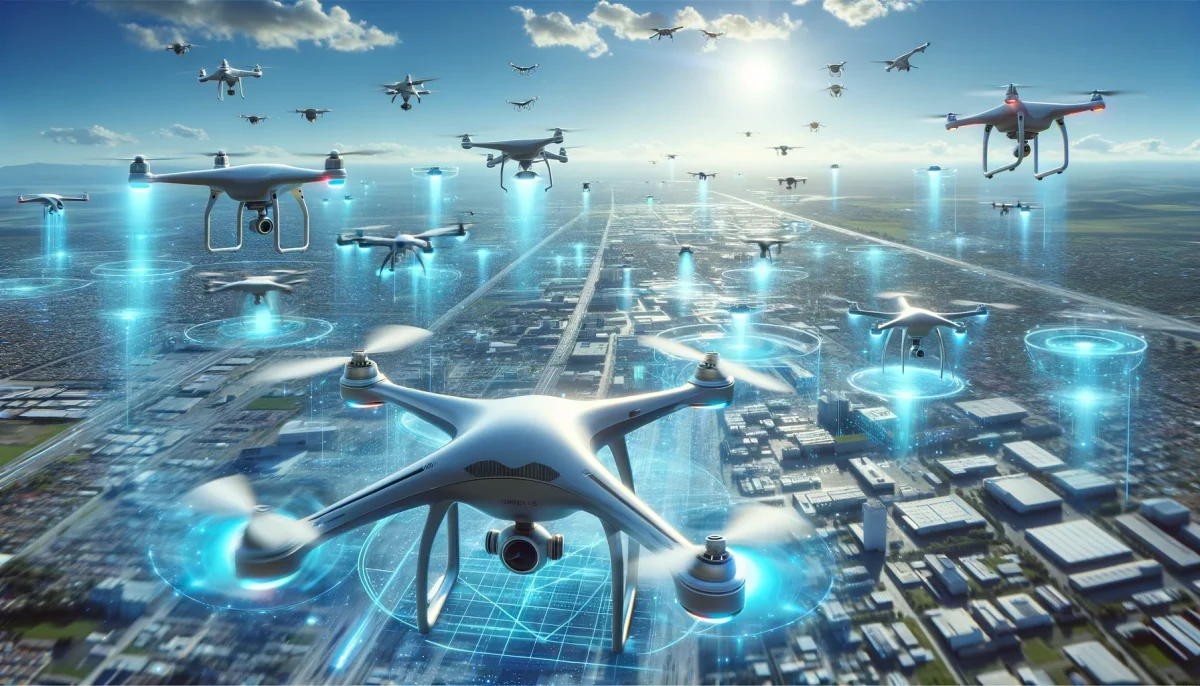The United Kingdom is preparing to arm Ukraine with thousands of new drones equipped with artificial intelligence (AI) in a major technical warfare uptick in collaboration with the United States and other allies. As the Russia-Ukraine war nears its two-year anniversary, these drones are intended to overwhelm Russian targets, possibly changing the balance of power on the battlefield.
The rise of AI-enabled drone warfare
The deployment of these unmanned vehicles could enable Ukraine to overwhelm Russian positions, leveraging the drones’ ability to operate in large fleets without the need for direct human control. This advancement comes when drones play an increasingly pivotal role in the conflict, with both sides seeking to gain the upper hand through superior technological capabilities.
Russia has escalated its production of battle drones and has benefited from significant supplies from Iran. Meanwhile, a coalition supporting Ukraine has pledged to deliver 1 million drones to assist its defense efforts. A recent successful operation involving naval drones against a Russian warship in the Black Sea underscores the growing importance of unmanned systems in modern warfare.
Technological edge and strategic implications
The introduction of AI-enabled drones represents a leap forward in military technology, with these systems capable of executing coordinated attacks on enemy positions. Such capabilities are a testament to the innovation on the battlefield and reflect a broader global race to develop new technologies that could define future conflicts.
This initiative has garnered support at the highest levels, with White House officials engaging defense companies to explore innovative technologies that could bolster Ukraine’s defenses. The focus on drones, however, does not diminish the urgent need for traditional artillery, a shortage of which poses significant challenges for Ukraine. German Chancellor Olaf Scholz has emphasized the necessity of increased military aid, highlighting the ongoing conflict’s broader political and financial implications.
Admiral Rob Bauer, chairman of NATO’s military committee, remarked on the potential effectiveness of combining drones with AI, suggesting that such strategies could outperform traditional artillery barrages. This sentiment is echoed by Ukrainian President Volodomyr Zelenskyy, who has called for additional support in terms of long-range weapons and artillery to prevent Russia from adapting to the current intensity of the war.
The future of warfare and international dynamics
As nations continue to invest in and develop cutting-edge technologies, the conflict in Ukraine serves as a focal point for the evolution of modern warfare. The deployment of AI-enabled drones by Ukraine, supported by its Western allies, marks a significant moment in military history, potentially altering the course of the conflict and setting a precedent for future engagements.
The commitment of Ukraine’s allies to providing advanced technological support underscores the international dimensions of the conflict, reflecting a collective effort to counter Russian aggression. As the war continues to evolve, the effectiveness of these drones and the ability of both sides to innovate will likely play a critical role in shaping the outcome.
In this high-stakes environment, the race to develop and deploy advanced military technologies is more than just a matter of national defense—it reflects the shifting landscape of global power and the potential for new forms of warfare in the 21st century.





